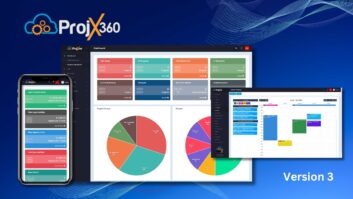Managing a specialty store is like teaching a moving target. Everyone has two agendas: your’s and their’s.
However, you can divide the task into two categories: people and things. Things are much easier to manage, as they don’t usually give you a hard time. You seldom get an argument from a display saying it doesn’t like its location in the store. When you come to work in the morning it’s usually still where you left it the night before.
However, your staff is a different story altogether. Every manager has to address the age-old problem of “How do I get my staff to do what I want them to do?” And without begging or losing your temper.
One of the best ways to do this is to stop managing on your opinion and start managing on the data.
You see, the data never lie. You can tell me all day how good you are at sales, but the sales report will tell me the truth. Yes, I know you are “never” late for work; however, your time card tells a different story. Yes, I know you sell a ton of 5.1-channel receivers, but according to the figures there are only six pounds in each of your tons.
I’ve often said “sales management” is the easiest because the numbers are there in front of you.
Here’s an example of what I’m talking about. Your store sells in excess of 700 SKUs. You need all of them sold. Your inventory is not a museum collection. However, you have the “opinion” that Bill is not pulling his weight when it comes to selling accessories.
When you interview Bill he will invariably say: “What are you talking about, I sell lots of accessories.”
Now, in Bill’s mind he feels he’s telling the truth. However, the truth is that Bill has no idea how much of anything he sells. He just looks at his total on payday. You, on the other hand, should have a read-out of everything he sold for the month. You should have the data.
So you sit down with Bill and show him his stats. Bill will say one of two things: “I thought I sold more than that,” or, “I sold more than I thought.” Without the data, neither one of you know what’s going on.
OK, you both agree the data are accurate. He sells few accessories. Now what are you going to do about it? That’s the real job of management: Not just identifying issues, but also dealing with them. You can chastise Bill for poor performance, but unless you are prepared to coach him and teach him, his performance will not change.
There must be a reason Bill isn’t selling accessories. I don’t think it’s because he doesn’t want to. It must be that he doesn’t know how. You (or someone) are going to have to teach him.
Yes, I know he said he’s worked in an electronics store before. So what? He’s never worked in yours.
Impending doom should wave its flag when an applicant applies for a job and the first thing you hear is: “I’ve been in this business for 20 years and have worked for everybody.” Congratulations, it’s your turn.
Most employees do not get trained. The big-box retailers have all of their vendors come for a six-week “training” period to teach the new recruits all about their products, but not one of them teaches how to sell that product. Identifying customer needs, overcoming objections and closing the sale remain a mystery.
On the other hand, the mom-and-pop store is so intimate, owners feel training will come through experience. As a storeowner, I can’t wait that long. I need a training strategy now.
Most job descriptions do not include “mind reader.” Unless you tell your staff what you want, when you want it and how to do it, you will never have control of your store.
So begin by collecting the data so you know what’s going on. Then act on that data. Yes, it’s going to take some time, but the harder you work, the more money you make. It’s always been like that and I have to think it always will.













